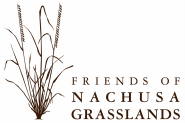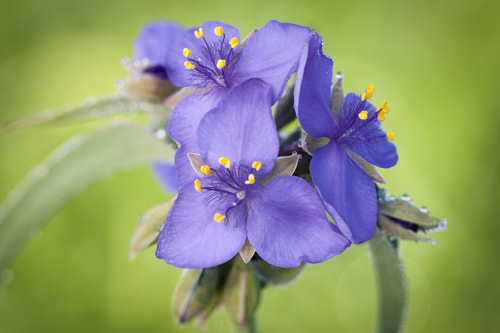Parsley Family (Apiaceae) |
Spiderwort Family (Commelinaceae) |
|
How can I recognize a member of the spiderwort family?
Alternate leaves, sharply folded along their length, with the leaf base wrapping around the stem. Plus the flowers only have three petals, often the third one small (but not in Spiderwort). Flowers in this family may remind you of lilies, which are a different family. Cool stuff to know about spiderworts The Scientific name Commelinaceae is to honor three related Dutch Botanists named Commelin. Two of the family were accomplished botanists (the two larger petals), the third died at a young age (the third small petal). |
rattlesnake masterEryngium yuccifolium
This plant sign is under construction. Check back next time. |
common spiderwortTradescantia ohiensis
Doesn’t like heat Common spiderwort flowers are beautiful, blue, showy clusters of three-petals. They open in the morning and close on sunny days in the afternoon. On cloudy days, they will stay open longer. The flowers will shrivel to a fluid jelly if touched in the heat of the day. Some plants uses Various bees like to gather nectar in the morning when the blooms of this plant are open. Other animals at Nachusa like the white-tailed deer, cottontail rabbit, and box turtle like to eat this plant. The leaves and flowers are edible for humans and can be used in salads. The stalks can be braised, grilled, or baked like asparagus and eaten as well. The plant has medicinal properties also. A poultice made from the leaves can relieve the itching from spider bites and insects and the juice can be used as eyedrops. Latin name origin This plant is named after John Tradescant (1608 – 1662), who was a famous gardener for Charles I of England and a friend of John Smith, who brought plant specimens from America to England. The species name is in honor of the state of Ohio. |

